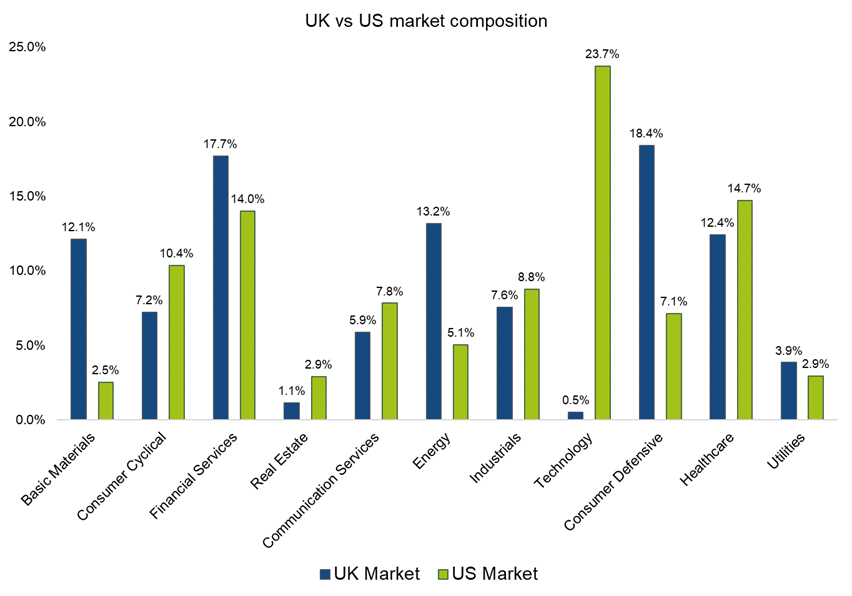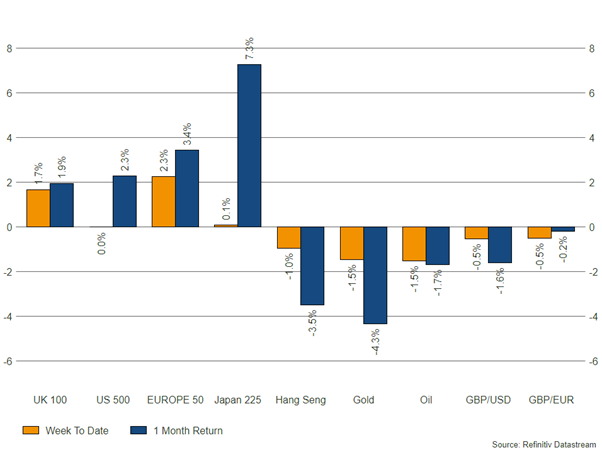London’s FTSE 100 surpassed the 8,000-point threshold for the first time ever this week. The UK equity index hit an all-time high on Wednesday and opened above 8,000 on Thursday as Centrica, one of the constituents of the benchmark, delivered record profits on the back of soaring energy prices. The British Gas owner’s share price jumped 5% after reporting operating profits of £3.3 billion, helping to push the index higher. In the last 12 months, the FTSE had fallen below 7,000 following Russia’s invasion of Ukraine in February 2022, and also last October after Liz Truss’s mini-budget upset markets.
What has driven the FTSE?
UK equities rallied on Wednesday as inflation numbers came in slightly lower than expected (10.1% vs 10.3%). The inflation announcement caused the pound to fall against the US dollar on the hopes of fewer interest rate rises from the Bank of England, and the fall in sterling helped the FTSE 100 through the 8,000 mark. The index, which is packed with multinational companies earning much of their revenue overseas, benefits when the UK currency weakens – something we saw play out after the Brexit referendum in 2016.
For a long period of time the UK market has been unloved by investors. It’s high exposure to ‘old economy’ sectors, such as oil, mining, banks and insurers have been out of favour as technology and growth stocks boomed. This makeup, however, has been more of a strength in recent times. With higher inflation and interest rates squeezing equity valuations, investor sentiment toward the UK benchmark has been more resilient. As an example, the oil giant Shell, which is currently the largest company in the index, gained 43% last year, while Apple fell nearly 27%.
Financials, materials, energy and defensive stocks dominate the UK market:

Source: Morningstar
The UK economy
Short term economic markers have also been stronger than previously expected in the UK. As we mentioned in our note last week, the Office for National Statistics showed that GDP growth was completely flat during the fourth quarter of 2022, and so the UK has avoided a technical recession. Whilst inflation remains high and the labour market tight, recessionary pressures persist in the UK, but the government is already noting that the economy “is more resilient than many feared”. The Office for Budget Responsibility and the Bank of England are still forecasting a recession this year, though predictions are improving with time.
Bowmore portfolios
The long-term performance of UK equities has lagged that of global peers. The likes of US large-cap tech, for example, has enjoyed sustained support and bumper growth over the last decade, notwithstanding drawdowns in 2022. However, less growth-focussed sectors that are heavily represented in the UK market have dodged the worst of last year’s fallout, and our exposure to the UK has played its part in providing relative protection for portfolios.
Our diversified allocations in the space have held up well when compared to global markets, with the likes of the Artemis UK Select fund up 2.7% since the start of 2022, and the R&M UK Recovery fund up 1.8%. Within ESG mandates, where the likes of oil producers are not contributing to returns we have still seen the Royal London Sustainable Leaders fund return -3.7%, sheltering portfolio values when compared to global equities, which are still off -13.7% in US dollar terms.
Source: Refinitiv – Market returns as at 16/02/2023

